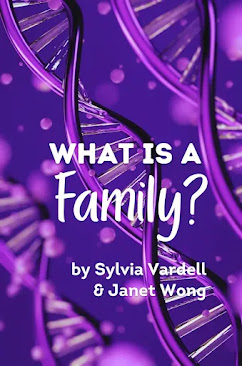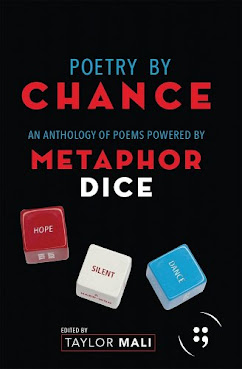I can hardly believe it, but this Monday, April 22, 2024, [in addition to being Earth Day] will be the 15th anniversary of the founding of our TeachingAuthors blog! To celebrate, we're giving away an autographed copy of a very special book (hint: it was written by one of our TeachingAuthors) PLUS a $15 gift card to Bookshop.org. You'll find the giveaway details at the end of this post. Also, in honor of Poetry Friday, I am including a poem excerpt from our giveaway book. (Another hint for you!)
When we founded TeachingAuthors back in 2009, I had no idea we'd still be here so many years later! Today I kick off a series of posts commemorating this milestone. Each of the TeachingAuthors will reflect on how her writing, her outlook, and/or the industry has changed over the last 15 years.
In one of my earliest posts here, I explained how I became a TeachingAuthor. At that time, I was teaching writing classes for adults and children at the College of DuPage in Glen Ellyn, IL and other local venues. Candlewick had published Rosa, Sola, the middle-grade novel I wrote for my creative thesis for my MFA in Writing for Children and Young Adults from Vermont College, and I was working on several picture book manuscripts--some I'd started at Vermont College and others I'd drafted later. I'd loved reading picture books to my young son and had hoped to publish my own. By 2009, I had received some encouraging rejections, but I never found a publisher for any of those picture books.
I believe I've shared here before that I think one of my biggest career mistakes was not writing another middle-grade novel to follow up Rosa, Sola. I'd had several ideas, but none of them quite worked. (And I really wanted to publish a picture book.) Perhaps if I'd sold a second novel to Candlewick, they would have published a paperback edition of Rosa, Sola and it wouldn't have gone out of print when it did. But I was honored to have a middle-grade short story published in a Candlewick anthology that came out in 2010: I Fooled You: Ten Stories of Tricks, Jokes, and Switcheroos, edited by Johanna Hurwitz. That story, "Biz Z, Cammi, and Me," allowed me to prove to myself (and the world) that I can write humorous stories. 😀
My career path has taken other unexpected twists and turns. Back in 2009, I could never have imagined that I would write a historical romance set in 18th-century Milan. Or that, after I finally finished it, I'd end up putting the manuscript in the proverbial drawer when I couldn't find a publisher, despite it winning several awards. But that's what happened with my young-adult historical Playing by Heart, as our long-time blog readers may recall. That book's path eventually had a happy ending, though, when it was published by a small press. I was thrilled to announce the good news here in January of 2017.
The story of Rosa, Sola had a happy ending too. I eventually got my rights back from Candlewick and self-published the novel in both paperback and ebook format. In fact, we celebrated our 7th TeachingAuthors blogiversary with a reveal of the book's new cover and a giveaway. I'm so pleased that readers continue to find and enjoy the novel.
Now my writing path is circling back to the beginning--the very beginning. I started writing as a young teen, initially writing only poetry. I have returned to those roots the last few years, taking poetry classes and having my poems published in several anthologies. (You can scroll down on the Published Works page of my website to read about my most recent poetry publications.)
I've also returned to picture book writing, both fiction and nonfiction. And just two months ago, I announced that I had signed with agent Anjanette Barr of Dunham Literary to represent those manuscripts. I've never had an agent before--back when I started in children's publishing you didn't need one, and you would, in fact, have been hard-pressed to find an agent who represented books for young readers. That's one of the many ways the industry has changed in the last 15+ years.
For all the writers reading this, I hope the story of my writing journey isn't disheartening. I confess: there were many times along the way when I was tempted to quit. But I'm glad I stubbornly kept plodding on. If writing is your calling, I encourage you to be UNSTOPPABLE when it comes to pursuing your goals.
And that leads into the poem I want to share today, which is an excerpt from the very special picture book you can win as part of our blogiversary giveaway. Here's the poem:
Do you recognize it? In case you don't, here's another clue: the full page from the book:
This page is from TeachingAuthor Esther Hershenhorn's masterful picture book S is for Story: A Writer's Alphabet, illustrated by Zachary Pullen (Sleeping Bear Press). One reason this book is perfect for our 15th blogiversary giveaway is because it was published the year we started this blog, 2009. In early October of that year, we celebrated the book's release with a whole series of posts about its making. We gave away a copy then, too!
A second reason why we want to include S is for Story in our giveaway is because it's all about the writing process. Here's a brief description from the Renaissance Learning Site:
"This book utilizes the alphabet to explain and examine the techniques, tools, and strategies of those who wish to live a literary life, covering writing terms and topics such as genre and story elements, with quotes from famous authors."
But the book does so much more! Esther's energy and enthusiasm for writing and writers shines through on every page. Which is why the third reason why we're including this book in our giveaway makes me sad: S is for Story is no longer in print. 😢
Fortunately for us, though, Esther has a copy she's willing to part with that she'll autograph for one lucky winner. If you're not that winner, I encourage you to check the book out from your favorite library so that it continues to circulate.
You'll find our giveaway details below. After you enter, don't forget to visit Heidi at my juicy little universe for this week's Poetry Friday roundup.To enter the drawing to win an autographed copy of S is for Story: A Writer's Alphabet PLUS a $15 digital gift card to Bookshop.org, use the Rafflecopter widget below. (Note: if the widget doesn't appear, click on the link at the end of this post that says "a Rafflecopter giveaway" to enter.)You may enter via up to 5 options. The more options you choose, the better your odds!
If you choose option 4, you MUST leave a comment on TODAY’S blog post or on our TeachingAuthors Facebook page. If you haven’t already “liked” our Facebook page, please do so today!
If you prefer, you may submit your comment via email to: teachingauthors [at] gmail [dot] com.
Note: if you submit your comments via email or Facebook, YOU MUST STILL ENTER THE DRAWING VIA RAFFLECOPTER BELOW. The giveaway ends May 18, 2024 and is open to U.S. Residents only.
If you're unfamiliar with using Rafflecopter, here’s info on how to enter a Rafflecopter giveaway. And a second article explains the difference between signing in with Facebook vs. with an email address.
Good luck!
Carmela
a Rafflecopter giveaway







































